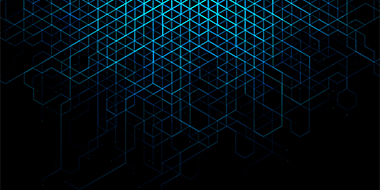Human Resources
HR, disrupted: six things to get the board on board with AI
22 March, 2019 | Written by: Andi Britt
Categorized: Artificial Intelligence | Human Resources
Share this post:
Welcome to our HR Modernization Playbook: Tomorrow’s people – Why HR matters more than ever in the age of artificial intelligence.
Digital transformation is happening faster than ever. The adoption of artificial intelligence (AI) and automation will redefine jobs, enhance employee productivity and accelerate workforce development. In fact, skills and culture – not technology – are the biggest barriers to business growth in the AI era. This means CEOs are looking to their CHRO to lead culture change, manage talent and drive down costs. The time to act is now: the future is already here.
Chapter 3: HR, disrupted: six things to get the board on board with AI
In the first two chapters of this series, we explored the ways in which AI and data are transforming the workplace and the HR function, and delved into the technologies that are being used in organisations right now. From recruitment to performance management, the entire employee journey is undergoing a revolution.
The CHRO has a crucial role as an advocate for a bold new approach to managing talent. You understand the need to embrace AI; the next task is to convince the board. Below, I have addressed some common misgivings with answers that will help you to make your case.
1. “AI is going to make us all redundant.”
Like all technological change, AI will change the nature of jobs. But it won’t be a one-way system. As it disrupts traditional work practices, AI will shift some roles, but open up opportunities for others. It will replace many of the roles dedicated to routine methodical tasks, but amplify the value of roles that require empathy, creativity and problem-solving skills. For employees whose jobs span both, it will automate the routine tasks and free up time to focus on strategic thinking. What’s more, new jobs are being created in deploying and training AI systems. It’s not about replacing people; it’s about making the best talent more productive and roles more meaningful.
2. “HR is about people – not robots.”
It’s important to see AI as an enabler, not as a threat to the HR function. This kind of transformative technology works best when designed and implemented with humans at the centre. Used smartly, AI will empower HR people to drive business decisions. It will complement and inform human decision-making, but it cannot replace human emotional intelligence and judgement. Talented HR professionals can motivate and empower employees; great AI simply harnesses data analytics and predictive capabilities to make work processes more efficient. Design your AI projects with this in mind for a successful human/machine partnership. The role of the HR will be to work out how best to allocate work across the human and machine workforce.
3. “We don’t have the right skills to make this happen.”
Skills are the new competitive currency, so it is important to recruit with AI and data in mind: 60% of HR leaders cite digital skills as their priority. Yet, it is also clear that there are just not enough digital and AI skills in the market; HR therefore needs to help ‘build’ these capabilities from within their current employee base by developing relevant programmes and encouraging a culture of continuous learning across the organization. However, it’s not just technical skills that are needed; there is a growing emphasis on the softer skills that already exist across your organisation. Great interpersonal skills, an appetite for working in teams, creativity, empathy and flexibility are all essential to data-based projects and processes. Also, as we explored in chapter 2, AI is a critical enabler of these new skills, helping to recruit and promote the right talent and curate learning for employees.
4. “This sounds expensive.”
Of course there will be a cost to implementing new technology. But this is an important investment in the future of your business – the productivity gains and efficiency savings will by far outweigh the upfront costs. For example, recruiting people is hugely expensive, time-consuming and risky; AI can help find and recruit the brightest, best people into roles that will satisfy them, then help them to develop and progress within the organisation. This will drastically reduce the cost of replacing people who, despite a great application and interview, turn out to be unsuitable or unreliable.
5. “AI will introduce bias.”
Some people worry that decisions based on algorithms rely on a logic that doesn’t reflect the nuances of the workplace. In fact, AI can reduce or reinforce bias, depending on how it is designed. For example, AI can eliminate human stereotyping in the screening stages of recruitment, or recommend jobs to candidates that they did not know they were qualified for. AI solutions can and should be fair and unbiased by design. If you build fairness into your AI systems and remain transparent in the algorithms you use – and, crucially, ensure humans are always part of the equation – you will avoid bias.
6. “I want to know the future vision for this.”
It’s impossible to predict. Just like early adopters of mobile phones in the 1980s couldn’t have imagined the role smartphones play in our lives today, it’s pointless to try to map out the future for AI in the workplace at this early stage. The technology we will be using in HR in 5 years time has probably not been invented yet! Instead, focus your energies on getting started – and start small. Identify a specific problem to be solved with AI. If the solution works, scale it; if it doesn’t, bin it and start again. This kind of fast, agile approach means you will learn as you go and see value quickly.
The most important thing to keep in mind when getting colleagues on board is that this is no longer a future priority. You need to act now. If you don’t work out how you put AI into your business now, you’re not going to be in business for much longer.
In the next chapter, From old to new: the evolution of HR I will describe the shift from old-school thinking to the new CHRO mindset required – and shaped – by AI.
Explore the next chapter in this series From old to new: the evolution of HR – or visit our website to find out more.

Senior Partner - IBM Talent & Transformation, IBM Services Europe
Transforming B2B Sales: Unleashing the Power of AI and Automation in Telecommunications
In the dynamic world of telecommunications, staying ahead requires constant innovation. VMO2, a renowned leader in the field, recently embarked on a journey to evaluate latest technology as an opportunity to enhance end-to-end customer experiences and automate low-value tasks within their B2B sales process. The aim was to achieve time and cost savings, while improving […]
AI and the Changing Nature of Work
As companies look ahead to 2024, we can be confident that deploying AI will be high on the business agenda. For those business leaders looking to harness AI to boost productivity, one critical area to explore should be AI in the workplace. The use of AI and machine learning in the workplace is not particularly […]
Will GenAI bring us greater operational agility?
It has been quite an exciting summer for tech in government, with the buzz around Generative AI rippling across Whitehall. 80% of all public and private sector organisations will have incorporated AI into their business processes during the next three years. GenAI raises some interesting questions about whether the public sector can effectively use it […]


